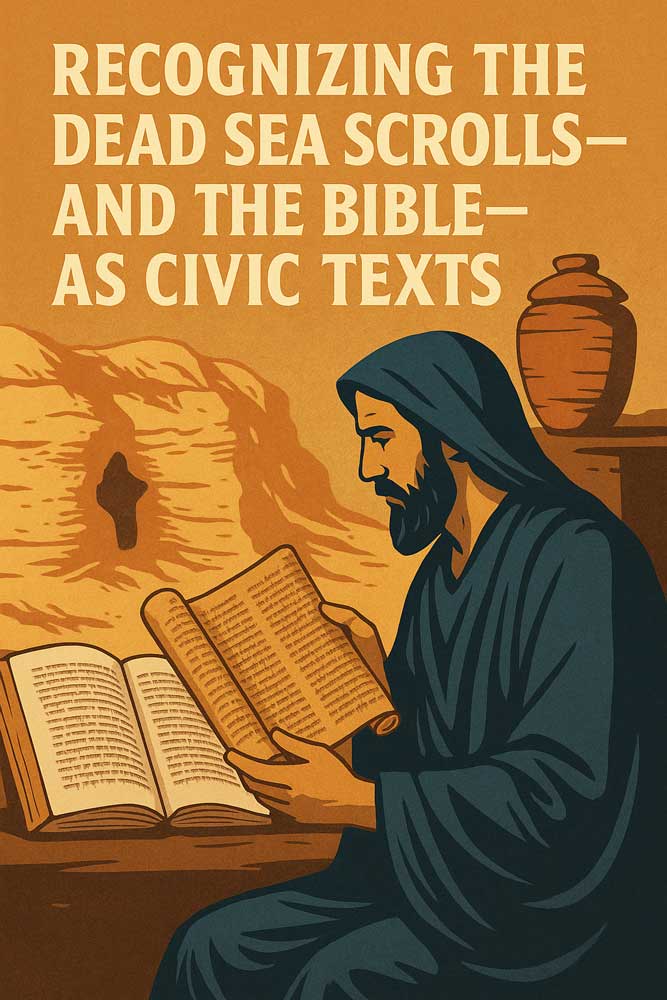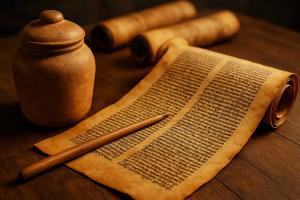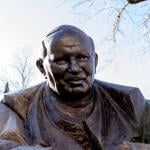What We Overlook in the Study of Sacred Texts

Silence, Scrolls, and the Stories Still Untold
Reframing Sacred Scripture as a Civic Resource
The Bible is one of the most widely read and influential books in human history. Yet, unlike Shakespeare’s plays, the U.S. Constitution, or Homer’s Odyssey, people rarely discuss it as a key work of literature, politics, or culture—unless it’s part of a debate about religion.
We need to move beyond the reflexive concern that teaching religious texts is the same as promoting religion. The Bible, like the Magna Carta or the works of Aristotle, shaped Western society’s moral and legal frameworks. When schools and the media avoid it entirely, we lose a vital lens for understanding the evolution of governance, law, and collective values. This isn’t about devotion—it’s about context.
This approach is uncommon due to how we discuss faith in public life. Media and public discussion often portray faith as deeply personal, politically charged, or socially divisive. That framing makes it harder to engage thoughtfully with sacred texts as historic, philosophical, and literary contributions. But we don’t need to study the Bible to agree with it—we need to study it to understand the world it helped create.
A Major Historical Discovery Still Gets Overlooked by the Media

Take the Dead Sea Scrolls—some of the oldest known copies of the Hebrew Bible, hidden in desert caves for over 2,000 years. Their discovery altered what we know about early Judaism and Christianity when they were established. They proved that many core beliefs have remained unchanged across centuries. These scrolls are more than fragile pieces of history—they’re a testament to the human need to write things down, to hold on to meaning, and to pass ideas from one generation to the next.
And yet, when the Reagan Library hosts a major exhibit of the scrolls, with crowds lined up around the building, the national media have largely ignored it. We heard more about King Tut’s gold mask than these texts that shaped how millions of people live, think, and believe. Where’s the curiosity? The deeper coverage?
The scrolls are of great importance to Jews, Christians, and historians alike. They remind us that these big ideas—such as the rule of law, covenant, and community—don’t belong to any one group alone. These are stories and consistent thought leadership that have connected us over thousands of years.
In a time when finding common ground is challenging, the Dead Sea Scrolls — having drawn crowds at the Reagan Library — will soon head to the Museum of the Bible in Washington, DC. The exhibit offers journalists a chance to tell the scrolls’ story not as religious artifacts, but as part of our shared human heritage. It’s a moment too valuable for both media and educators to overlook.
Using Ancient Texts to Foster Critical Thinking and Connection

Schools could utilize the scrolls to help students explore history, language, and the origins of various faith traditions. By treating foundational sacred texts as a tool to help students think critically, we encourage them to ask more effective questions and gain a deeper understanding of the world.
The study of ancient texts explains how law and ethics evolved. It enables us to observe how different religions share common values and where they diverge. When the Bible is taught alongside the Torah and the Koran as part of a comparative literature course, students can explore the commonalities these texts share, rather than only the differences that set them apart.
Seeing Sacred Texts as Cultural Connectors
This shift in thinking would not only build greater respect for sacred texts but also highlight the quiet, steady work that faith communities do every day—work driven by purpose, not just evangelism, and too often overlooked or misinterpreted.
The Dead Sea Scrolls U.S. tour offers us the opportunity to tell a larger story—one about connection, not division, and one that belongs to us all, and is relevant to our discussions today.













